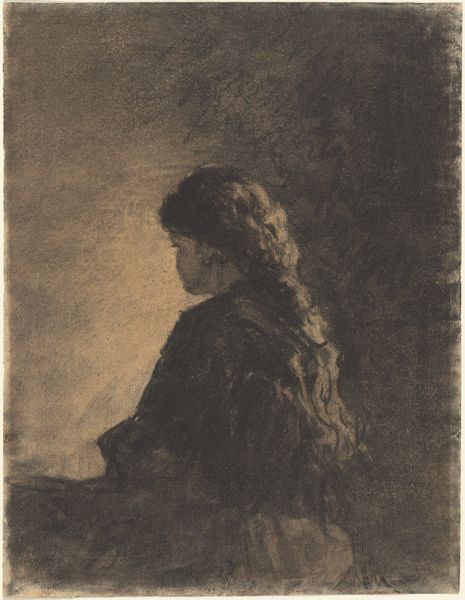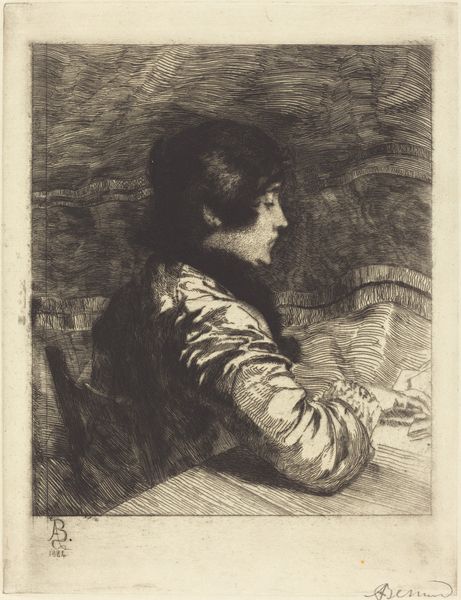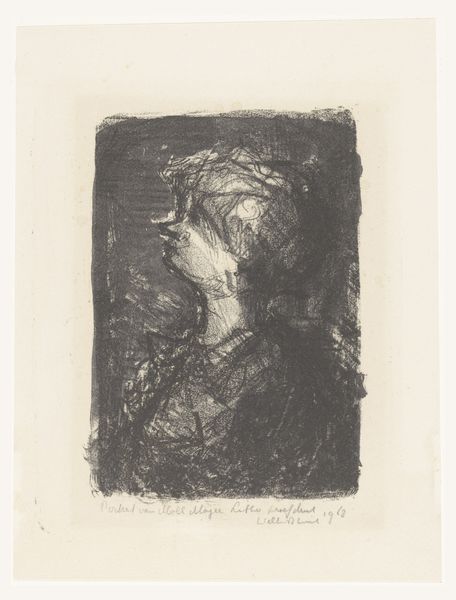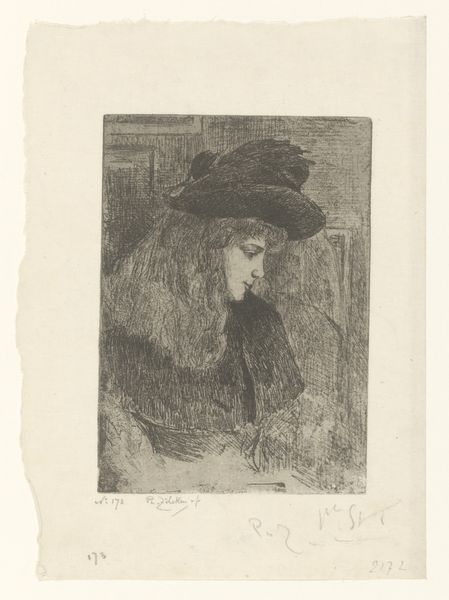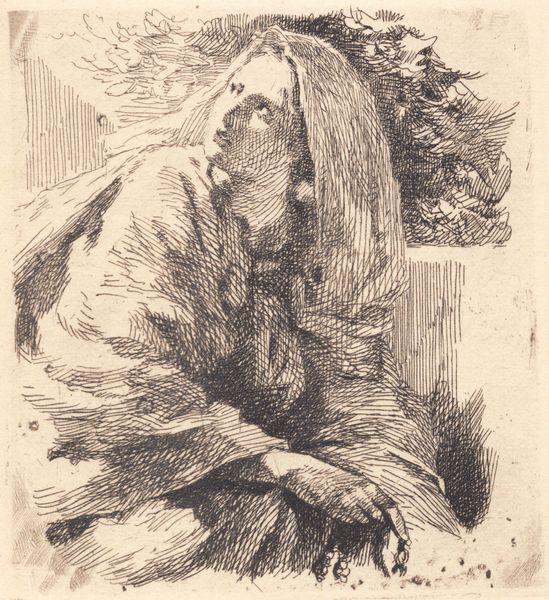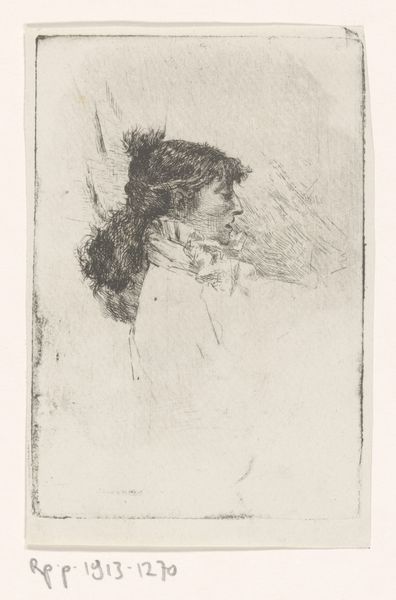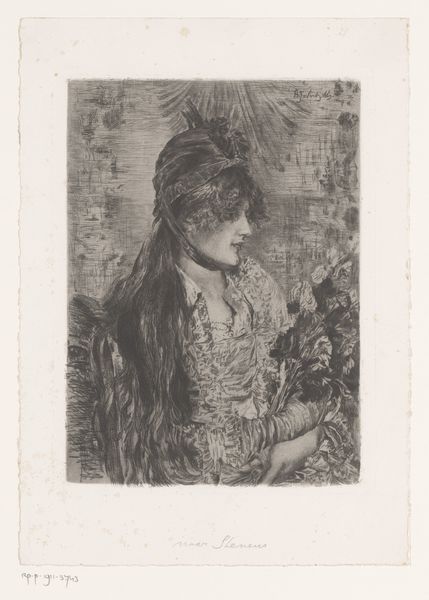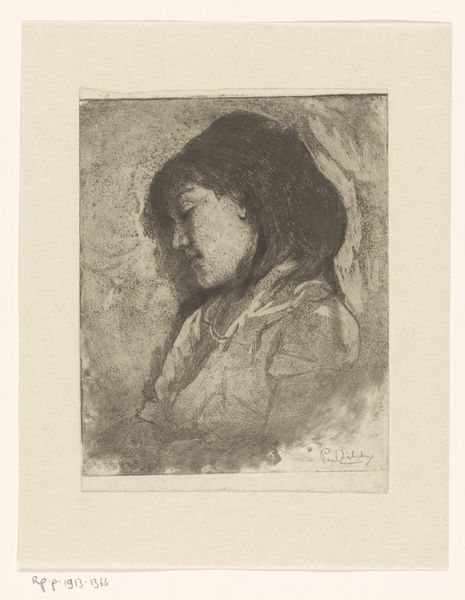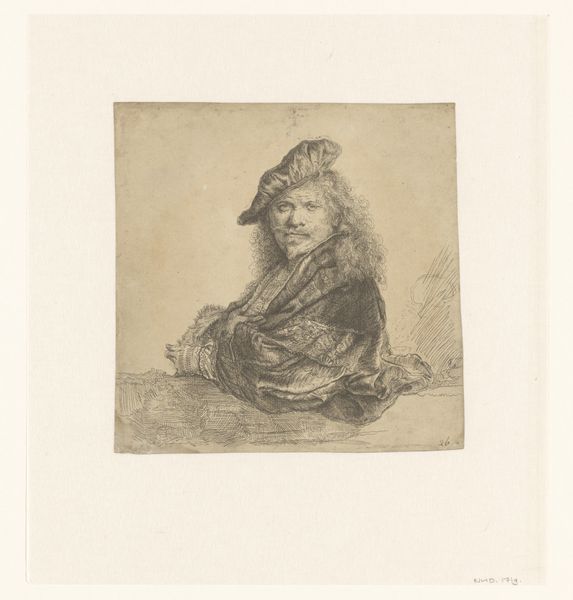
Copyright: Public domain
Editor: This is "Melancholy" by Paul-Albert Besnard, created in 1888. It's an etching, rendered with a delicate use of line. I’m immediately struck by how forlorn she looks, like she's watching something fade away. What's your read on this piece? Curator: It whispers a lot, doesn't it? To me, it feels like a visual poem dedicated to those in-between moments, the hazy borders between joy and sorrow, hope and despair. Notice how Besnard uses line – not just to define her form, but almost as a character in itself. They are almost a flurry surrounding the subject. Do you feel a sense of movement, a story perhaps, hinted at by the way those lines dance around her? Editor: Yes, it's like the lines capture the inner turmoil she is facing. They seem to echo the emotions in her eyes. They appear a bit haunting. What about the etching process itself, does that inform the melancholic mood? Curator: Absolutely. Etching, with its delicate lines and tonal variations, is a perfect medium to express subtlety. This wasn't a bold pronouncement; this was a shared, intimate sigh. And thinking about 1888, the artistic landscape was shifting away from rigid academicism towards more introspective, Symbolist themes. One might say, perhaps melodramatically, that artists were no longer content to just paint the world; they wanted to paint the soul. Editor: That’s so interesting, thinking about it in that context really helps me see beyond just a sad woman! The idea of painting the soul... Curator: It’s all about digging beneath the surface, isn’t it? Art and life... both more rewarding when we truly ponder their meaning. Editor: Definitely. I am grateful to have discovered something about art as a feeling. Curator: It's a pleasure, isn't it? The joy of learning and the adventure of truly looking.
Comments
No comments
Be the first to comment and join the conversation on the ultimate creative platform.
